The monobar story
Atmospheric
Diving
Suits
1715
John Lethbridge

John Lethbridge (1675-1759) invented the first underwater diving machine in 1715. He lived in the county of Devon in South West England and reportedly had 17 children.
1720
Jacob Rowe
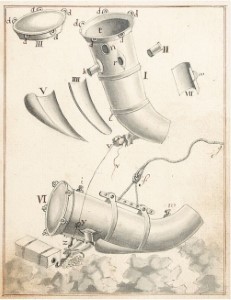
In the first half of the eighteenth century, a number of divers used the ‘barrel’ type of apparatus to salvage goods and treasure from the bottom of the sea. One of these was Jacob Rowe, a man of many parts: sea captain, engineer, inventor, author, and diver, but it is as a diver that he is now remembered.
1838
William Taylor
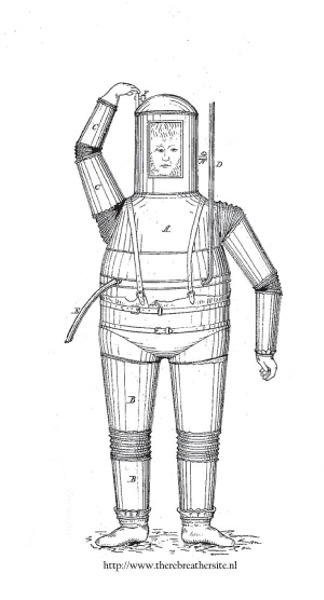
Taylor, 1838 (U.K.) – W.H. Taylor designed the first known armoured diving suit with articulating joints in 1838.
1856
Lodner D. Phillips
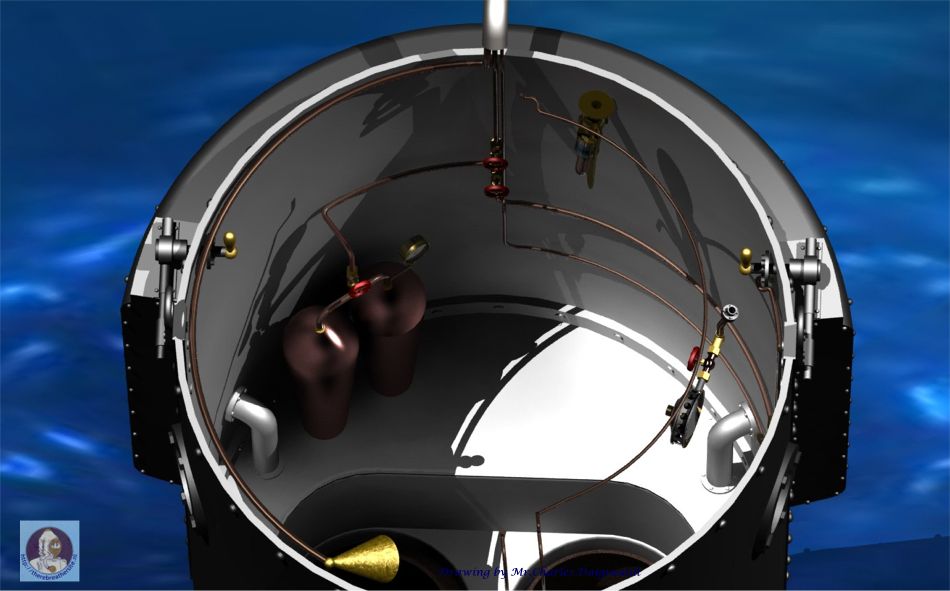
Phillips’ atmospheric diving suit was partly made of steel and partly made of cast iron.
1867
Thomas Cato McKeen

In 1867, the American, Thomas Cato McKeen, added a large back-mounted air reservoir and fabricated a rubber suit. A ingenious part of McKeen’s apparatus was the addition of a second air system to inflate the suit and bring the diver to the surface.
1870
Charles Wilson & C.F. Mudge

These two men designed and patented a very early ADS. No evidence was found it was ever actually build.
1875
Lafayette
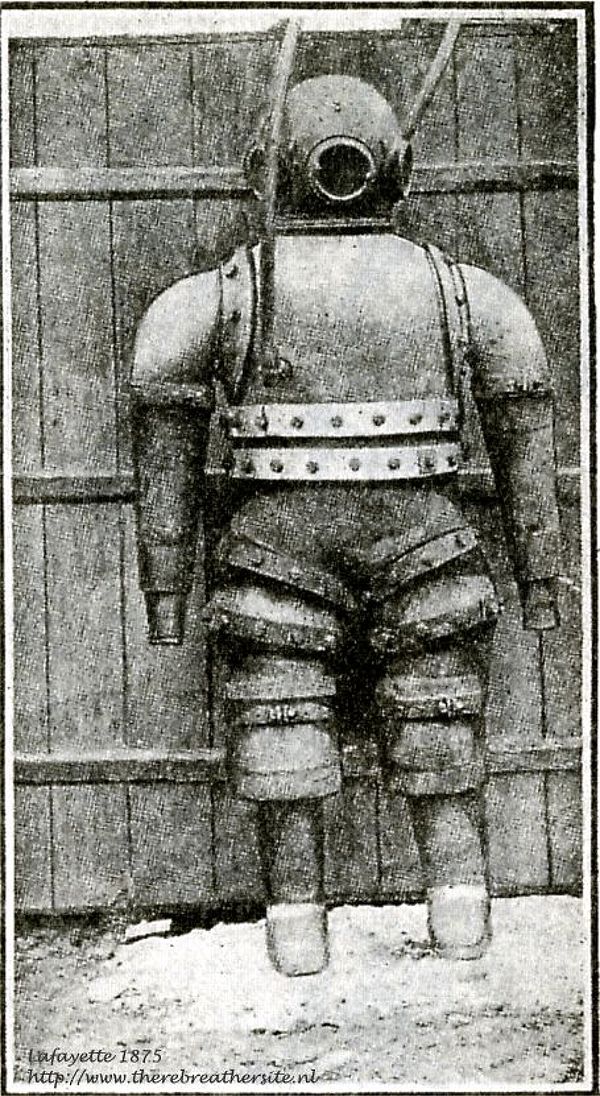
Siebe Gorman declared that a diving armour made of metal and leather was build in 1875 by Lafayette.
1881
Stephan Tasker

Tasker proposed to use a metal dress articulated with bellow joints, and to cover the whole with an external waterproof flexible dress of the ordinary pattern.
1882
Carmagnolle
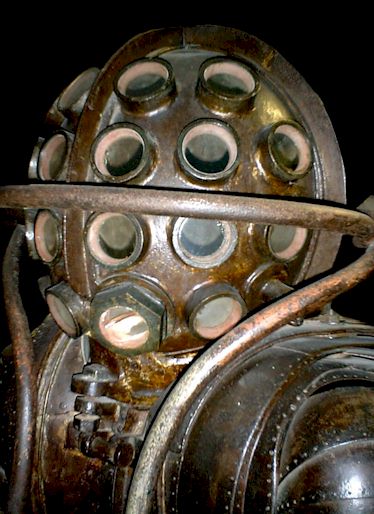
The French Brothers Alphonse and Theodore Carmagnolle build a very special atmospheric diving suit.
1889
Oliver Pelkey
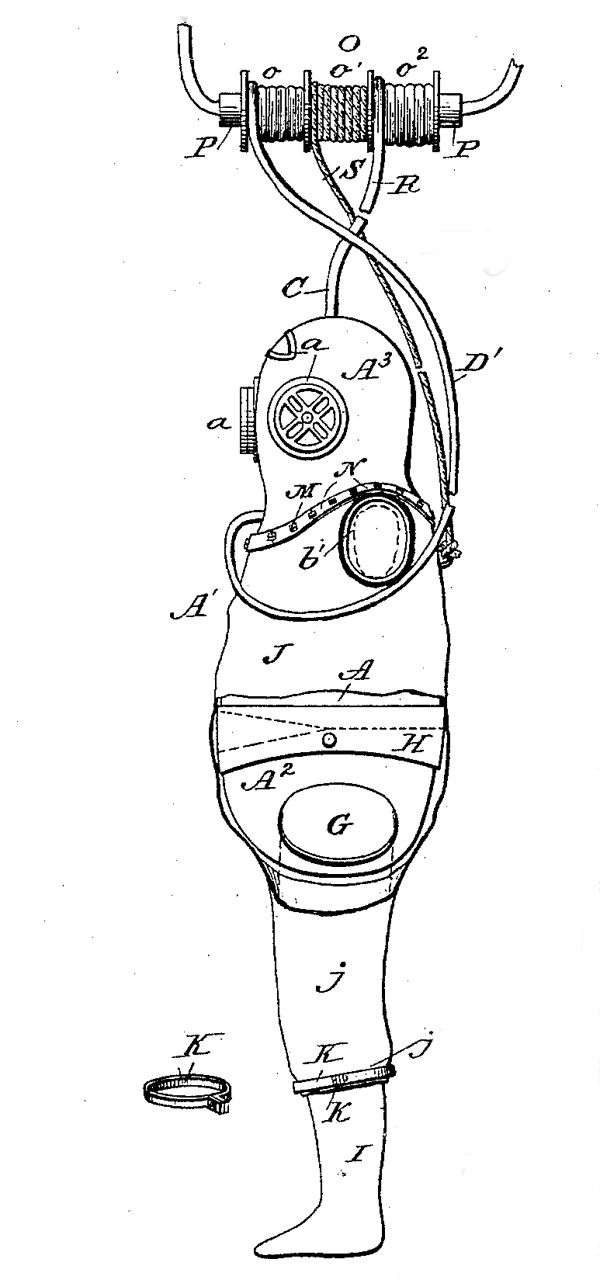
A Design patented in 1889 by Oliver Pelkey, is of little merit. It is not a completely armoured dress, the armour (in two portions) only covering the head and trunk.
1890
Arthur Hemenger
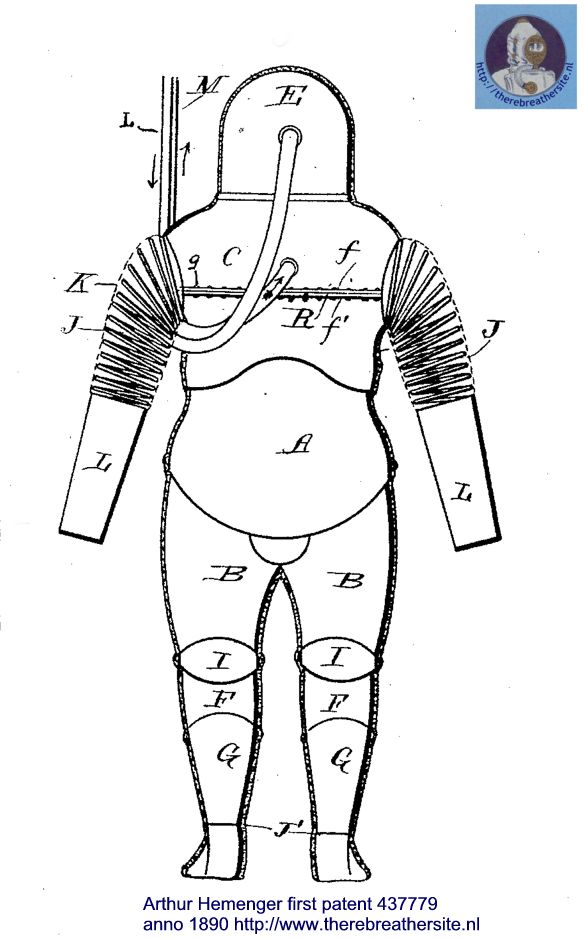
The armor is formed, however, of sheet brass, a somewhat curious material to select with steel available.
1891
William Carey

William Carey, of Southampton shows a plate suit, with ball-and-socket joints, and provision is made for easing the action of the joints by mounting them on ball or roller bearings.
1891
Boucher-Brault Filteau
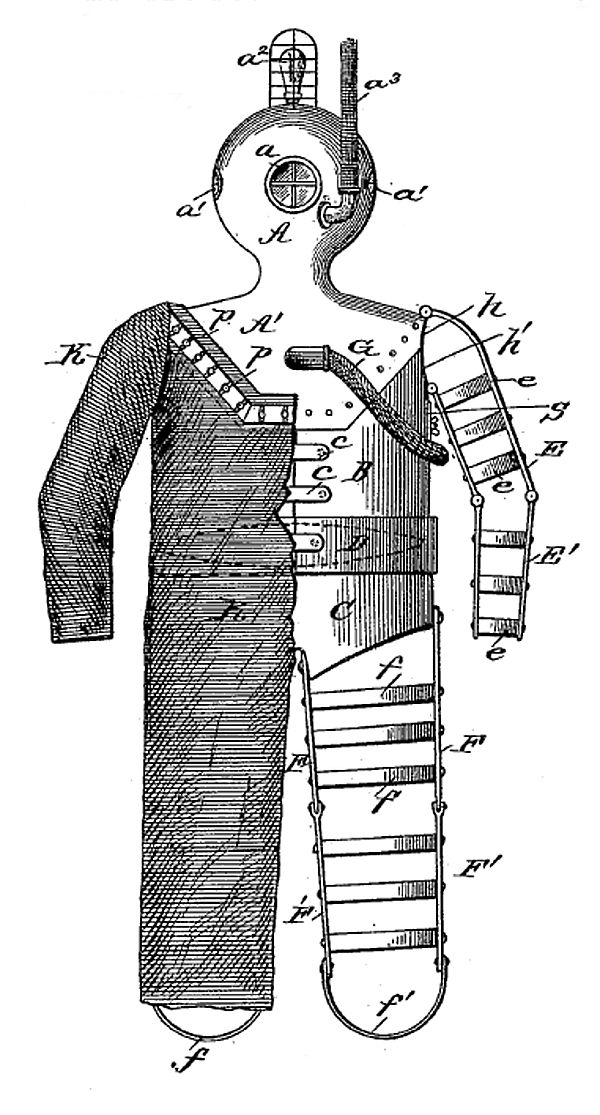
The suit consists of three pieces of armour, interlocking in the manner of a jig-saw puzzle, and covering the diver’s head and trunk.
1893
Arthur Hemenger
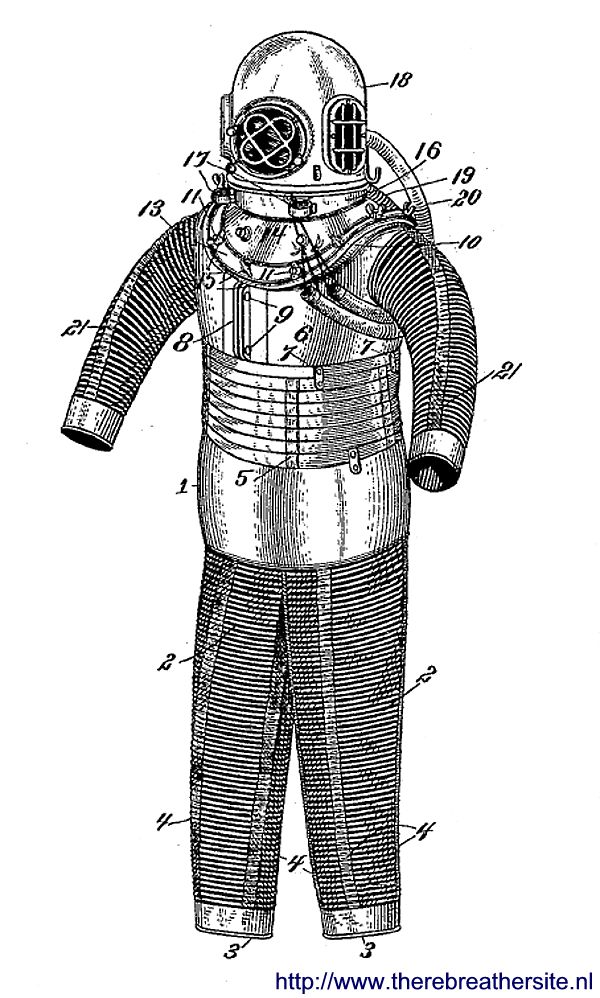
A metal casing is retained for the trunk, but both arms and legs are now covered with wire-stiffened waterproof cloth .
1894
John William McKenzie
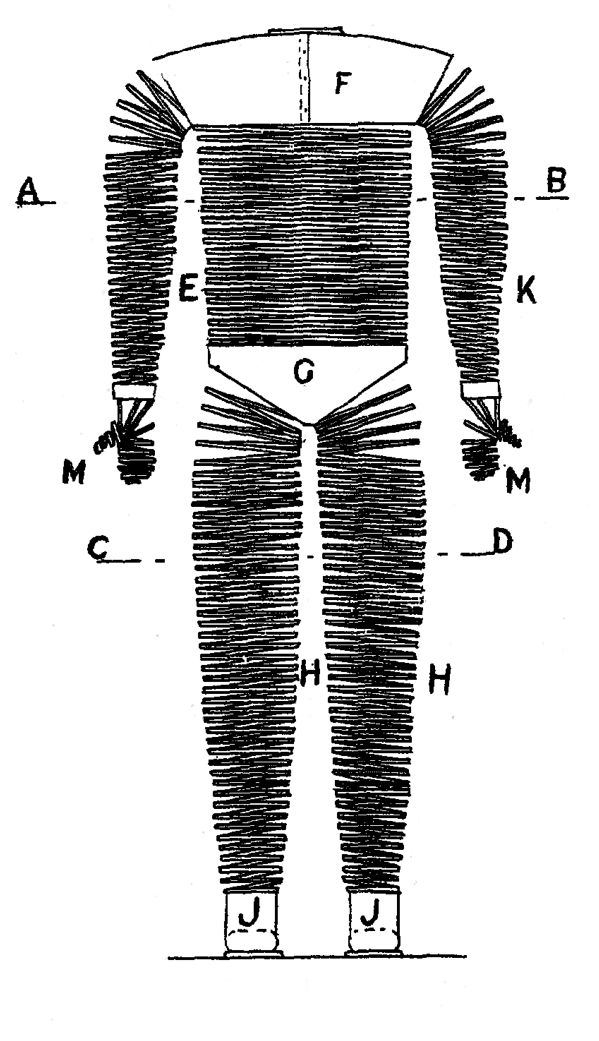
An apparatus for use in conjunction with diving dresses, the use of continuous spiral steel bands encircling the body, arms hands and legs, attached to metal shoulder, trunk and foot pieces forming a complete flexible casing capable of resisting great external pressure as described in the Specification and illustrated by drawings.
1894
Buchanan and Gordon

A deep-water diving dress of waterproof material, stiffened internally by spiral wires.
1895
John MacLeod
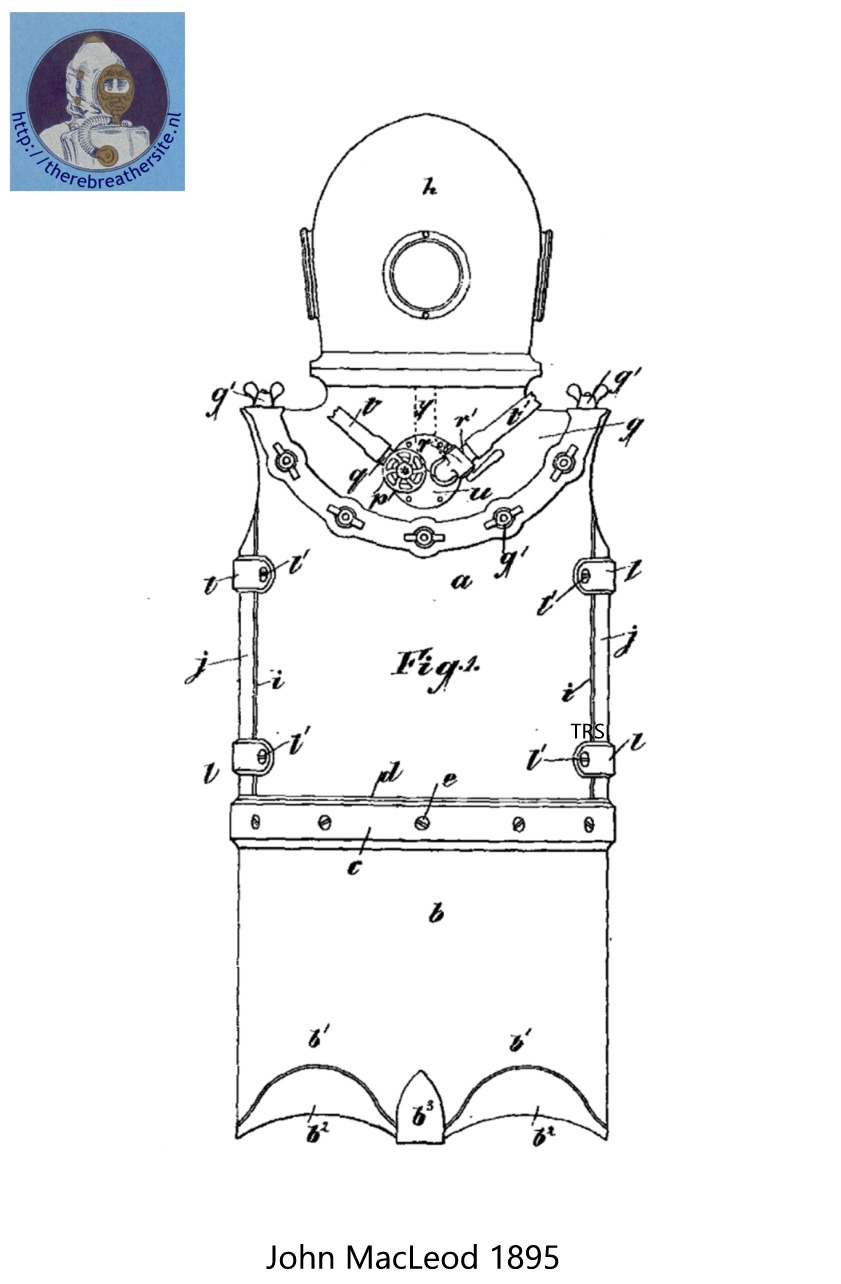
John MacLeod diver from Glascow patented his invention in 1895. His invention consists of a metal diving suit in which an upper part fits over the shoulders and on which the helmet is screwed. The chest piece connects to a metal part that fits around the legs and gives enough freedom to walk.
1895
Murray and Stuart

Murray and Stuart patented there suit in 1895. They used the old spiral technique and even used three layers to get the suit watertight.
1896
William Robert Fasey
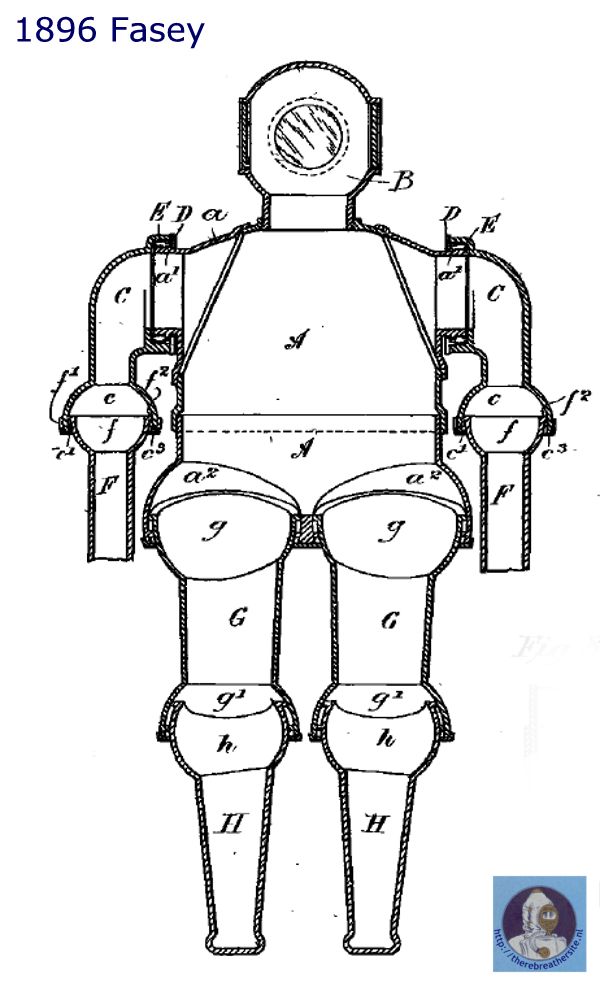
A dress proposed in 1896 by William Robert Fasey bears some resemblance to that of the Carmagnolles and to Careys. It is a plate dress with ball-and-socket joints, these being rendered watertight by leather packing.
1896
Wilhelm Becker

The Buchanan-Gordon plan appears again in a design produced by William Becker, of Paderborn, in 1896. The dress is formed of waterproof material, stiffened internally by metal rings and a complicated system of flexible lacings.
1897
Arthur McQuillan
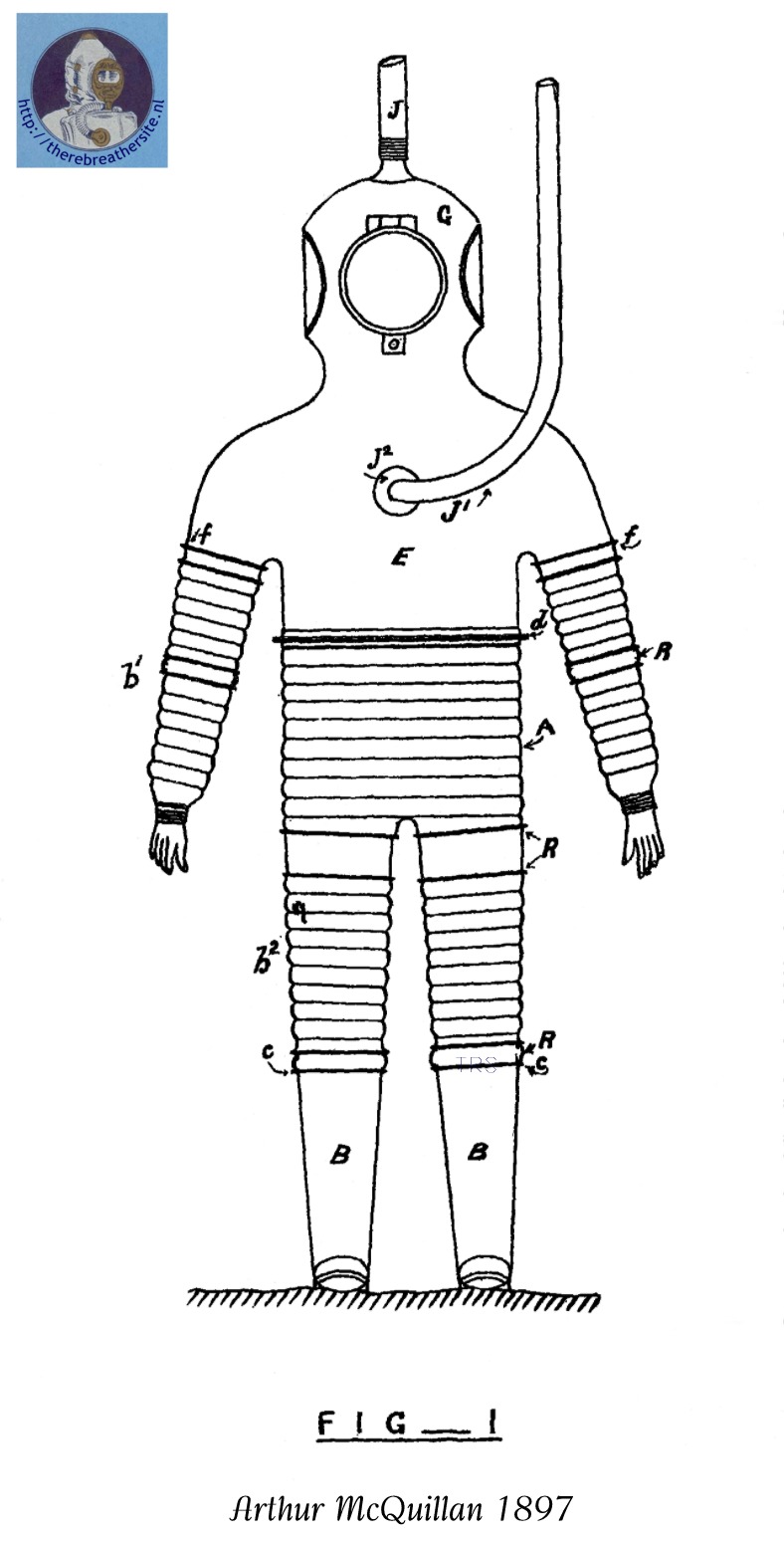
The invention of Arthus McQuillan relates to certain improvements in the mode of constructing diving dresses so as to enable them to resist the pressure incidental to deep diving, and consist essentially in providing the dress with a number of tubular rings -of iron or other suitable metal. These rings are sewn between two or more thicknesses of the material composing the dress, a sewn seam being between each ring. The dress is further provided with an external waterproof covering.
1897
Deep Sea Diving Company Limited Australia
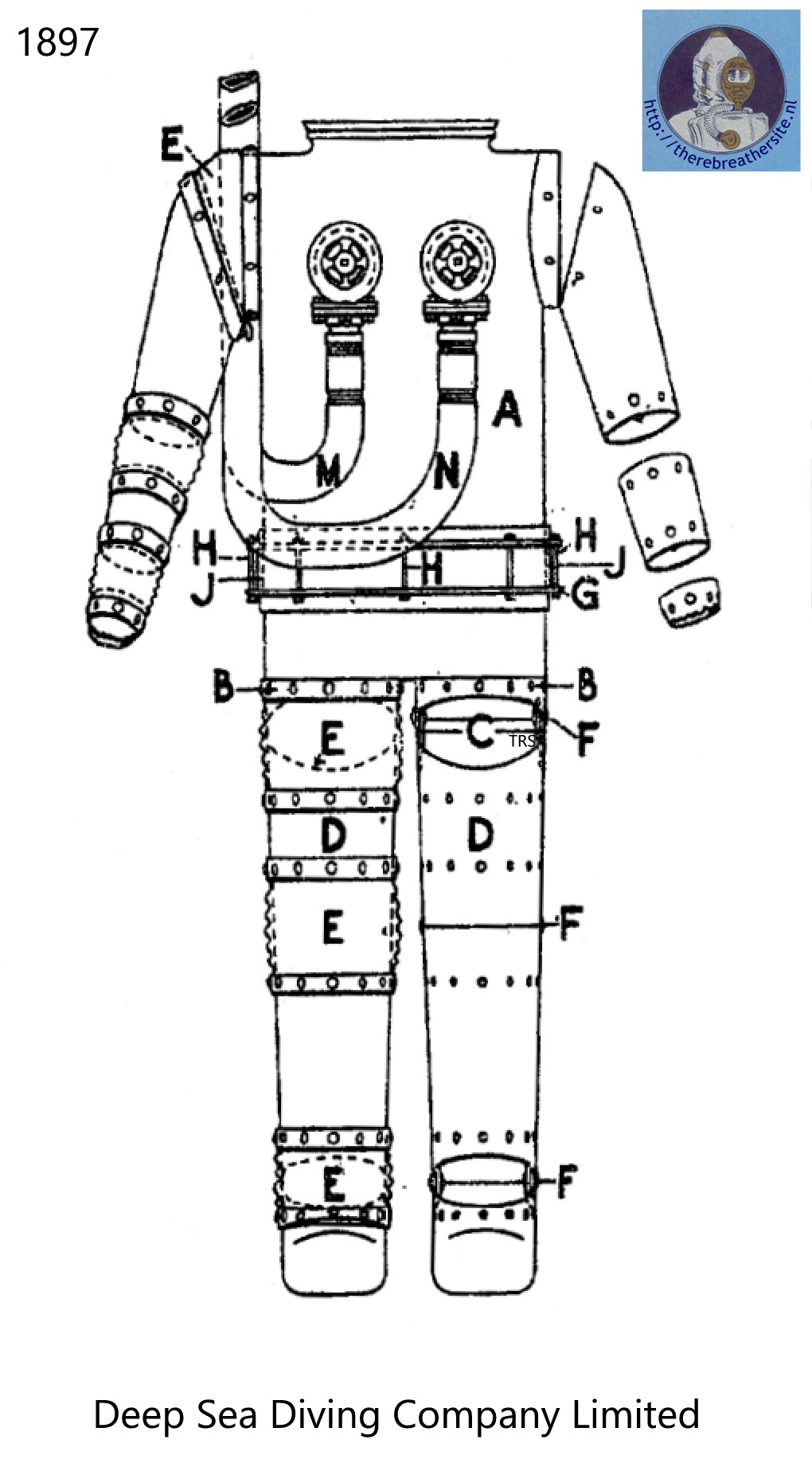
The Deep Sea Diving Company Limited from Brisbae Queensland patented an atmospheric diving suit in 1897
1897
Henry H. Gorter ball joint
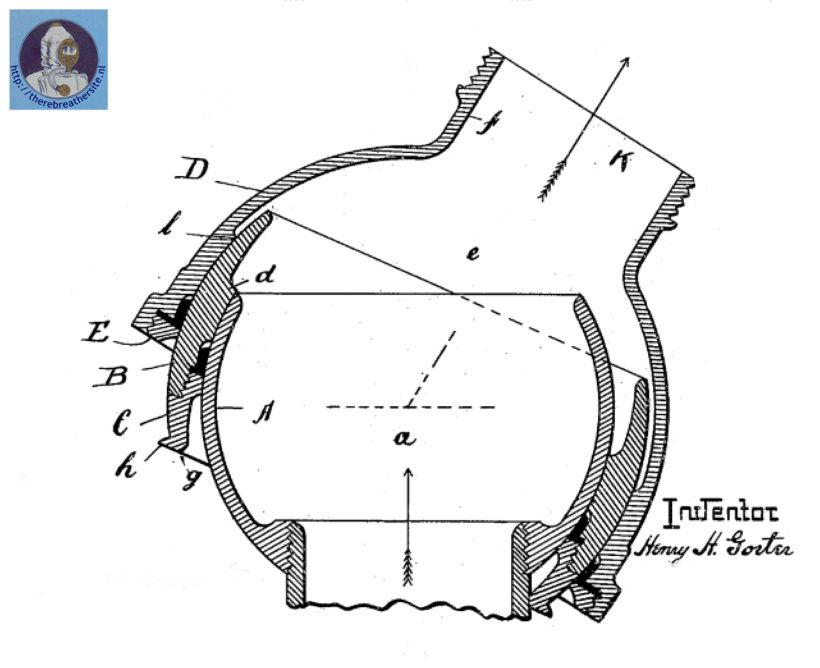
As early as 1897, Henry Gorter patented the first ball and socket joint, which was later used in many atmospheric diving suits.
1897
Alexander Gordon

In 1894 Buchanan and Gordon patented a diving dress. A later patent, taken out by Gordon alone, embodied various improvements in the fastening of the flexible material to the standing portions of the dress, such as the helmet; and it also provided for the use of jointed radius-rods running along the sleeves and trousers to prevent them from collapsing under pressure, while leaving them free to flex.
1897
John and George Day
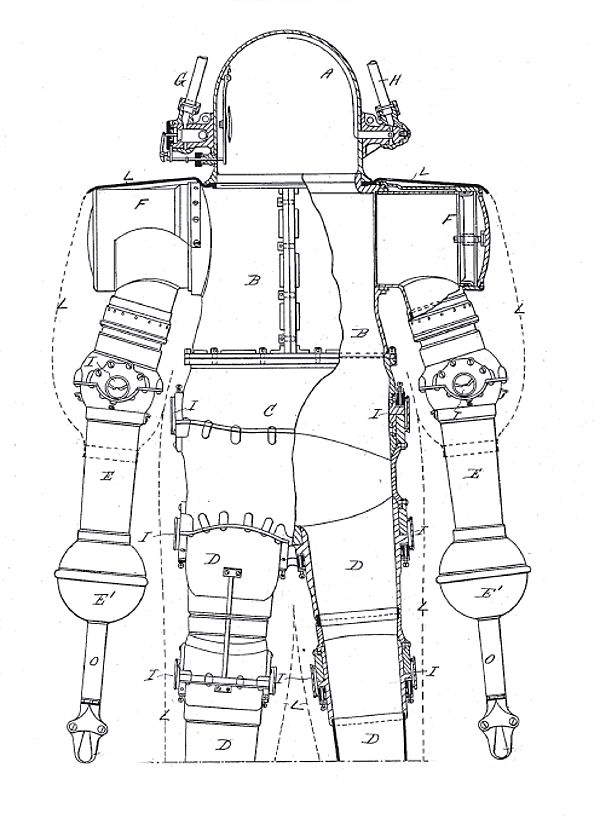
A very carefully designed dress was suggested in 1897 by John and George Day, of Maesteg, South Wales. The design provides for a completely armoured dress with ball-and-socket joints, kept watertight by “a suitable packing”.
1897
James Baker Pollard

Very Little is known about the suit James Baker Pollard from Roanoke State of Virginia patented in 1897. His patent 587604 describes a diving suit or armor with a metallic head section, a flexible shoulder section and a metallic trunk section.
1898
James J. Devine
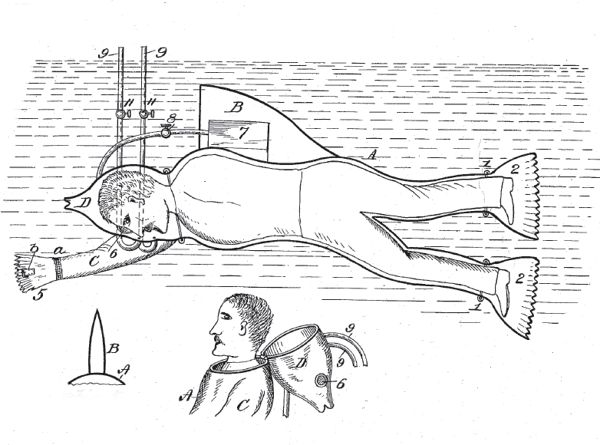
James J Devine patented a diving suit with a fish-like appereance. The main purpose was to transport a “torpedo” underwater.
